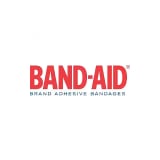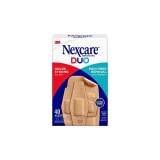Adhesive Bandages
Related Searches
Trending now
Band-aids are essential for minor workplace injuries, such as shallow cuts, abrasions, and scrapes. There are many types of adhesive bandages available, which makes choosing the right bandage difficult. The selection from a variety of options can lead to confusion and possible wrong purchase for a particular wound. There are four main types of materials used with adhesive bandage dressings, including plastic, fabric, foam, and tricot. There are general-purpose bandages and those that need to be applied to specific types of wounds. Browse the extensive selections of bandages and healthcare supplies at Staples to find the right bandages for a well-stocked first aid kit.
Consider the shape and material
Band-aids are made from different types of non-woven and woven materials. They come in a variety of shapes and sizes. Through the application of bandages, infected wounds, draining wounds, and wounds that require frequent dressing changes remain clean. Select an adhesive bandage that will help keep the wound sanitized for the longest period possible. This helps in reducing further infection.
Some adhesive bandages have to be used with other types of dressings. This may increase the cost of acquiring the two types of dressings. It's imperative to consider the frequency of changing the bandages when one is checking the cost. Another factor that influences the cost of the adhesive bandage is how the dressing affects the wound bed. Those that affect the wound bed may become less cost-effective than those that don't as they will need regular changing.
Adhesive bandages for different wounds
There are varying adhesive bandages for different purposes. Use the appropriate bandage for a particular wound. For instance, knuckles bandages should be used on wounds on the knuckles. Correspondingly, blisters and cuts would require different bandages.
Adhesive bandages come in different sizes and shapes and in a variety of materials. Consider packs of adhesive bandages that offer many sizes and shapes to ensure that the appropriate size and shape is available when needed.
Are fabric adhesive bandages better than plastic?
The material of choice depends on the application. Plastic bandages are the most common and affordable. They easily repel water as well as oils. They're not as comfortable as fabric bandages, which are flexible but do not work well in wet conditions.
Is the selection of dressing important?
The kind of dressing used on a wound is crucial for its healing. Using the wrong bandage can worsen the situation, leading to a longer healing period and, at times, even cause more harm to the wound.
How frequently should you change a wound dressing?
Different types of bandages can remain in place for varying lengths of time. If a fabric bandage gets wet, it should be changed. It's worth noting that the pad is the main feature of any adhesive bandage. It's essential to know if the pad will stick to the wound or not. Most pads have an absorbent lining that is resistant to sticking. If a pad lacks this lining, the bandage might require regular changing. Also remember to use gloves when changing someone else bandages.
Do all adhesive bandages have medication to treat infections?
Some dressing types contain medication that treats infection, while others do not. Those that lack medication can be used hand in hand with infection treatment medication such as antibiotic ointment. While some band-aids already contain antibacterials to help prevent infections.
































































































































